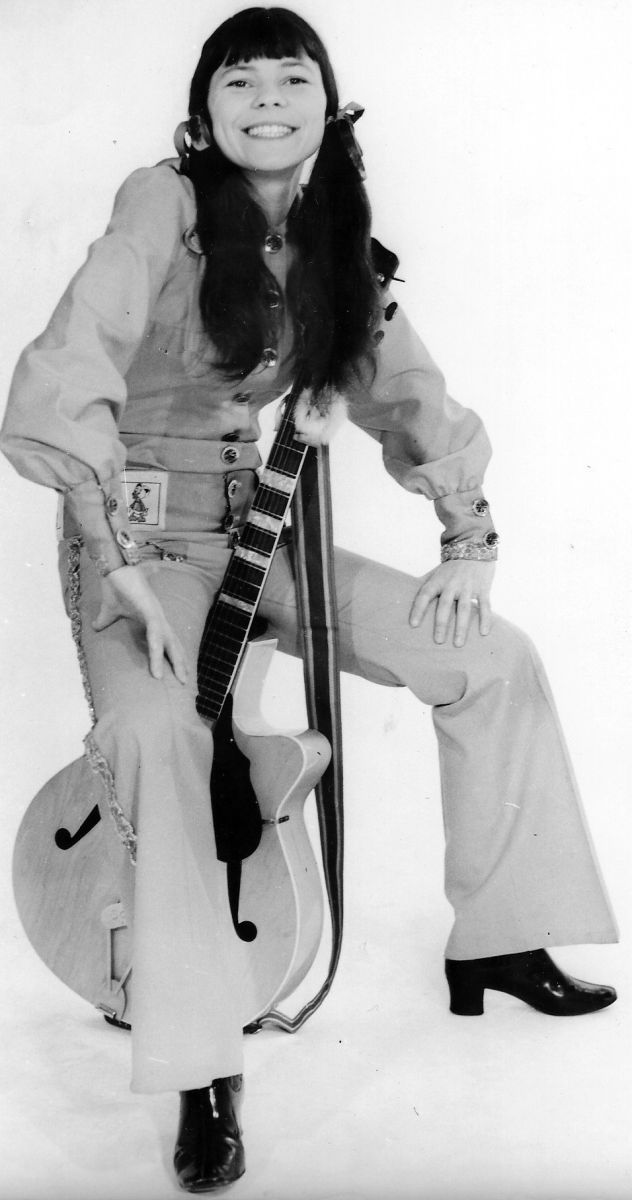Karin Stanek. The girl with the guitar
Mediathek Sorted























Childhood and youth
There are few people who have been as deeply impacted by the post-war years as Karin Stanek. She was born on 18 August 1943 in Beuthen (today: Bytom), the third of six children in a mining family. Her mother raised the children alone and the family lived in great poverty. Even as a young girl, Karin took on many of the household chores, and even though she liked to read books and enjoyed learning, she spent her free time cooking, washing and cleaning. The family’s financial situation meant that a higher school education was an impossibility, and she left her seven-grade primary school after completing her sixth year there. She then started working as a messenger in the Przedsiębiorstwo Robót Górniczych mining company in Bytom. She provided her mother with financial support – and also enrolled in evening classes.
Her first guitar was a present from her mother, who also taught her the first few chords. The young Karin had loved the instrument since she first saw it played by her uncle, whom she visited regularly. It quickly became clear that she was an extremely talented autodidact. Even so, she soon took up private lessons, which helped her further refine her guitar playing. She made contact with other musicians, youth clubs and culture venues. Intuitively, she felt that the guitar and her unique way of singing were the right form of expression for her. With the guitar in her hand, Karin already seemed to have no problem with stage fright or other self-confidence issues, and she quickly gained a foothold in the youth music scene in Upper Silesia. So it was that people began to recognize that the girl dancing around on stage with her guitar was Karin the young girl. She performed in clubs in Bytom, Szombierki and Miechowice, and played at the Bobrek black coal mine (formerly the Gräfin Johanna mine), as well as at parties and dance evenings. Her repertoire included popular songs and hits. Finally, she even gathered the courage to give a secret concert for her colleagues at work. Shortly afterwards, she gave an official performance at the Ministry for Energy and Mining (Ministerstwo Energetyki i Górnictwa) in Katowice.
The born entertainer
Karin Stanek felt magnetically drawn to the stage. The possibility of interacting with the audience was so exciting that she made enthusiastic use of it right from the start. Karin developed her performance image by trusting her intuition and remaining the same person on stage as she was off it. During the first few years, she twisted her long, dark hair into two plaits. Later, these became two side ponytails tied with a velvet ribbon, before she finally wore her hair open with a fringe. She didn’t use make-up for her performances, and almost always wore trousers. She remained an unpretentious girl with whom girls of the same age could identify very well. At the same time, she was an emancipated, independent young woman who sang about how her generation wanted to live – spontaneously and independently.
Due to the difficult financial situation at home, Karin Stanek never attended a regular music school. As an outsider in the music industry, there was only one route remaining to a career as a singer or musician: participation in competitions for young talent. She first decided to try her luck in March 1961, when she took part in a regional song competition organised by the Polskie Radio Katowice radio station. She needed to persuade the organisers to allow her to enter the competition in the first place, since participation was only allowed for people aged 18 and over. She was younger, and not only that, she looked like she was little more than a child. For her performance, she first sang the song “Diana”, then “Tutti frutti”, and won over the jury and the audience. She got through to the next round. For this stage of the competition, participants were asked to offer an interpretation of the same nostalgic song: “Śnimy się sobie co noc” (“We dream of each other every night”). Karin knew that this song did not fit in with her style, and withdrew from the competition.
In 1962, the next opportunity arose when the band Czerwono-Czarni (“the red and blacks”) announced that they were searching for new talent. Karin was persuaded by her boyfriend to apply for the first round in Silesia. With her performances, first in Zabrze and then in Kraków, the young singer landed a clear winner. Years later, she told her biographer and manager Anna Kryszkiewicz:
“The only [designated] accompanying instrument was the piano. However, I’d brought my guitar with me. When the members of the esteemed selection committee saw it, they smiled. They saw the flowers and stars that had been stuck on it, and the photos of Presley and Tommy Steel, and they found it amusing. For me, the guitar replaced the band; during a solo, I even used it as a drum. Of course, I sang ‘Hulla tutulla’. I forgot that I was wearing a skirt; I danced and ran around as though I was wearing trousers”.[1]
[1] Anna Kryszkiewicz: Karin Stanek. Autostopem z malowaną lalą, Warsaw 2015, p. 35.
























































































